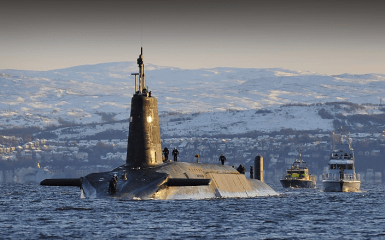Great Britain plans to test nuclear weapons, launching a nuclear missile from a submarine for the first time in 8 years.
Britain to launch Trident 2 nuclear missile
The nuclear submarine HMS Vanguard will enter the Atlantic this week. Officials have warned shipping about the test from 9:00 p.m. on January 30 to 4:00 a.m. on February 4.
The 30-year-old submarine was spotted on the morning of January 30 near Port Canaveral in Florida.
The Sun reports that the £4billion submarine will conduct a test launch of an unarmed missile after a seven-year refurbishment.
The submarine is expected to launch a single Trident 2 missile from a distance of 90 km from the east coast of the United States. The missile must pass about 6,000 km before falling into the sea between Brazil and West Africa.
The maximum range of Trident 2 is about 12,000 km.
HMS Vanguard can carry up to 16 Trident 2 D5 missiles, each armed with multiple British-made warheads, each 20 times more powerful than the weapons dropped on Hiroshima and Nagasaki in Japan during World War II.
What is known about previous launches
It is the first time the UK has tested a missile since a failed launch in 2016.
In 2016, the submarine HMS Vengeance unsuccessfully launched a Trident missile. The intercontinental ballistic missile was supposed to fly 9,000 km from the coast of Florida to a target southeast of Ascension Island.
But it deviated dangerously and automatically self-destructed. It was only the fifth launch of the Trident 2 missile this century.
Previous tests — in 2000, 2005, 2009 and 2012 — were widely publicized by the British Ministry of Defense and Lockheed Martin, the US arms manufacturer, as proof of the weapon's reliability.
The US-made Trident missiles are supposed to reach the edge of space and track their position relative to the stars before re-entering the atmosphere and plummeting to Earth.









